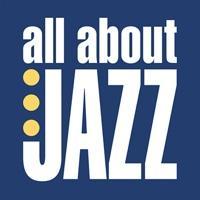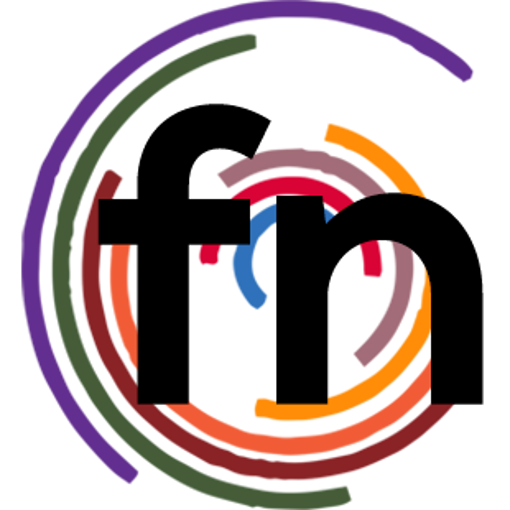Veteran Tuba Master Ralph Hepola Creates A Dynamic, Supremely Soulful New Lead Voice For The Idiom On His Eclectic Debut Album ‘Tuba’
by Jonathan Widran
As a veteran music journalist, Jonathan Widran has been a regular contributor, reviewer, feature writer, columnist and/or editor for Music Connection, Wine and Jazz Magazine, Jazziz Magazine, All Music Guide, Singer/Songwriter Universe, SmoothJazz.com, Billboard.com, iTunes, Amazon.comand the Los Angeles Times.
Veteran tuba master Ralph Hepola creates a dynamic, supremely soulful new lead voice for the idiom on his eclectic debut album “Tuba”.
Invented in both its bass and tenor forms in the 1830s by instrument builders Wilhelm Friedrich Wieprecht, Johann Gottfried Moritz and Johann’s son Carl Wilhelm Moritz, the tuba played a prominent role over the next century in the works of Strauss, Stravinsky, Wagner, Prokofiev, Brahms, Gershwin and others. Having played for several years with the Basel Symphony Orchestra in Switzerland and in the Vienna Philharmonic at the Salzburg Music Festival in Austria as part of a five-year stint in Europe earlier in his career, Ralph Hepola is well acquainted with the classical and symphonic applications of his chosen horn and lifelong passion. Yet as he prepares to release Tuba, his eclectic jazz and blues driven independent debut album, the veteran tubist points out that his instrument has a colorful history as well serving as the bass part in historic jazz ensembles – starting with Louis Armstrong’s groups and other prominent New Orleans groups, including The Eureka Brass Band and the Young Tuxedo Brass Band in the 1950s.
“It’s played a prominent role over the years for numerous legendary icons, including Stan Kenton, Gil Evans, Rahsaan Roland Kirk, Charles Mingus and Miles Davis, who had Bill Barber play on several albums, including the sessions compiled as Birth of the Cool and Miles Ahead, says the St. Paul, Minnesota born and raised Ralph, who subsequent to his time overseas freelanced in NYC for two years with various jazz and classical ensembles. “Then there’s New York-based tubist Howard Johnson, who played with Mingus and Kirk but more prominently, George Gruntz and Gil Evans. People are drawn to the tuba’s warm, lush and mellow sound, which creates a beautiful contrast to the edgier sounds of more traditional brass instruments like trumpet and trombone.”
With the exception of Johnson (who released three albums on Verve in the 90s), Bob Stewart (four albums in the 80’s and 2000s) and Joseph Daley (four indie releases in the 2010s), jazz tubists have for the most part continued in their side/soloist slots rather than as leaders helming their own albums. Now, after his several decade career as a sideman and touring musician, Ralph boldly aims to change all that with his powerhouse ensemble collection reflecting a stylistically multi-faceted aesthetic he dubs “21st Century Solo Tuba.” The 12 track collection features longtime associates Peter Shu (piano and keyboards), Daniel Artig (acoustic and electric basses) and David Stanoch (drums and percussion), with guest appearances by pianist/keyboardist Mark Asche and blues guitarist Peter Lothringer.
Gearing up for the release Tuba with an eye towards booking club and festival dates this summer, Ralph is building his presence on social media, including platforms on Jazz Corner, Last Row Music, YouTube, Facebook, Vimeo and Bandcamp. His page on All About Jazz has 24,000 views and includes high praise from Fiona Ord-Shrimpton, Editor/Curator of the site’s Track of the Day, who says of the album’s vibey, easy flowing soul-jazz flavored opener “Roots & Wings”: “Tu like a tuba, fufu like a funker and gro like a groover. This tune has Herbie fusion magic all over it.”
From there, Tuba finds Ralph taking us on a journey through all the musical loves of his life, starting with “Clarion Call,” a whimsical emotionally compelling Latin jazz romp that utilizes the chord progression of trumpeter Kenny Dorham’s “Blue Bossa.” As an aside, Ralph explains in his colorful liner notes, “A clarion was a type of trumpet during the Middle Ages. Incidentally, the Latin word for trumpet is tuba.”
He follows that with the atmospheric and sonically offbeat, fast modal tune “Hepmobile,” whose title is an ode to the classic Hupmobile to reflect the idea that the piece is a solo vehicle for tuba, sans solos by other band members. Showcasing the dynamic chemistry between Ralph and Mark Asche, “Blue Moment” is a brief but impactful tuba/piano ballad that the tubist first played at the Twin Cities Jazz Festival, which he performed each year from 2012-2015. The appropriately titled “Phraseology” is a spirited and swinging, high fallutin’ bebop tune that Ralph developed out of unique rhythm changes he created first. In the spirit of heroes like Sonny Rollins, whom Ralph recalls would record twenty choruses on a track, he features multiple choruses – then trades fours with his fellow musicians.
Tuba then enters blues territory, with the tubist first drawing on his extensive experience as a sideman in the genre in duet with Lothringer on the raw, down home tunes “Ralph’s Riff” and “Through the Wringer.” He then fashions a darkly seductive horn melody over Shu’s gospel-tinged Hammond B-3 organ on the minor key ballad “Incoming Blues”; Shu’s hypnotic solo is a highlight.
Ralph shares a more sensitive, lyrical side of his artistry on three rarely-heard moody, immersive folkloric songs (Black Eyed Susan,” “Scottish Lullaby” and “Mary, Young and Fair”) that cumulatively form a suite of traditional Celtic airs. These tracks featuring some of Ralph’s gentlest melodic tones over Shu’s graceful old school Rhodes vibe; Daniel Arlig’s plucky bass solo on the third song is a gem. The collection wraps with the slowly rumbling, old school soul-jazz funk/swing tune “American Landscape,” inspired by the American Landscape School of Painters who flourished between 1820 and 1880. According to Ralph’s notes, “Adventuresome and entrepreneurial, they painted scenes of incredible natural beauty on very large canvasses.”
“It’s very all over the map stylistically,” Ralph says whimsically, “but if you look at contemporary jazz, there are many artists on traditional instruments like piano, sax and trumpet who create recordings that have a Latin jazz tune followed by some bebop, a slow ballad and blues. It’s fun playing all these different rhythmic changes throughout and for me makes for a successful overall program. I see it like a concert experience that’s fast one minute, slow the next, touching all areas that comprise contemporary and traditional jazz. I play in seven different styles here. The only difference is, I’m making it happen with the tuba.”
“When I put together my rhythm section, I chose each member based on my idea to give them plenty of space to solo, like Miles once gave Coltrane, and Chet Baker used to give his ensembles,” he adds. “I know the tuba’s got a whole different sound, and I don’t want to shove it down people’s throats. I love the interactive spirit of this project. I enjoy serving as a foil for other players, maybe playing the head on a tune, a solo and a few choruses before opening it to their ideas.”
Considering his instinctive way with melodies, it’s perhaps not surprising to learn that growing up in Bloomington, Minnesota, Ralph played piano initially before picking up the tuba at age twelve. “I was a quiet and introverted kid,” he says, “and as a gangly twelve-year-old, I was attracted to this big macho instrument – something harder to play and hold – that would make a different kind of statement. I thought if I took it up and excelled at it, there would be more opportunities for me as a musician compared to all the competition I would have among the many trumpeters and million sax and piano players out there.”
It didn’t take long for those notions to become reality. At seventeen, Ralph was chosen to play before the British Royal Family in the Manitoba All-Province Band at Brandon University in Manitoba, Canada. While still in high school, he began performing as an extra musician with the Minnesota Orchestra, which later included recordings and tours to Carnegie Hall and Lincoln Center in New York City. During his teens, he also earned a position with The United States Army Band of Washington, D.C. At age twenty, he won a full scholarship to the Manhattan School of Music in the Young Artist Competition of the Minnesota Orchestra/WAMSO.
Ralph earned his music degree at Northwestern University where he studied with renowned musician and teacher Arnold Jacobs, whose career included forty-four years as Principal Tubaist with the Chicago Symphony Orchestra. At Northwestern, Ralph played and soloed with Jazz Ensemble I, which twice won Best Big Band at the Notre Dame Jazz Festival. Winning an international audition for the Basel Symphony Orchestra changed Ralph’s life. During his time in Europe, he played with renowned conductors Pierre Boulez, Antal Dorati, Herbert von Karajan, Claudio Abbado, and Lorin Maazel.
Over the years, Ralph built an impressive career whose eclecticism lays the foundation for his current emergence as a solo artist. He can be heard on forty recordings – including ones for EMI and Warner Bros. – as well as twenty-eight video productions. He has also performed for national tours of Broadway shows at the State and Orpheum Theatres in Minneapolis and Ordway Center for the Performing Arts in St. Paul. He has played performances of seventy-three different operas in ninety-eight opera productions with fifteen different musical organizations in the United States and Europe.
Ralph’s success in his home state earned him numerous accolades. The Southwest Minnesota Arts Council awarded him an Individual Artist Career Grant in 2017, while the Minnesota State Arts Board bestowed highly-competitive Artist Initiative Grants for both 2010 and 2012. In addition to completing a seven-week residency at the Wurlitzer Foundation (awarded internationally) in the esteemed arts community of Taos, New Mexico, he performed at Spoleto Festival USA in Charleston, South Carolina which “is internationally recognized as America’s premier performing arts festival”; the Children’s Theatre in Minneapolis, which is North America’s largest theatre for young people and their families; and the Guthrie Theater, the nation’s largest regional theater.
“I’m really grateful for the unique career I have had and the opportunity to engage in so many different recorded and live projects and work with some of the greatest musicians in the world,” says Ralph. “Some tubists are content playing for years in a single orchestra, and retiring on a great pension. My teacher Arnold Jacobs played in the Chicago Symphony till he was seventy-two! But I guess I’m cut from a different cloth. I feel there is a lot of great music inside me still and I enjoy the challenge of writing and composing new material and showcasing the tuba in ways many people haven’t yet experienced. Now that I have the chance to pursue that dream, I’m excited about the opportunity to give it a shot.”
by Jonathan Widran










